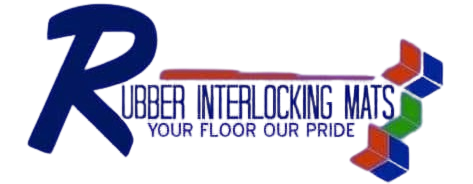Rubber Rolls
Rubber gym flooring is one of the most popular choices for both home and commercial gyms. It is highly durable, shock-absorbent, and dampens noise, making it ideal for heavy weightlifting and high-impact exercises. Rubber floors are typically made from recycled or virgin rubber and provide a slip-resistant surface that protects both the equipment and subfloor. They are easy to clean and maintain, able to withstand sweat, spills, and frequent use while offering a comfortable workout surface.
Foam flooring, especially EVA foam, is well-suited for lighter exercise areas such as yoga, pilates, or gymnastics. Foam is very light, flexible, and provides excellent cushioning and fatigue relief. Though less durable than rubber, foam flooring is easy to install with interlocking tiles and is generally more affordable. It performs best in low-impact areas where comfort is prioritized over heavy equipment resistance.
Vinyl gym flooring provides a durable, moisture-resistant surface favored in multipurpose gyms and high-traffic areas. Made from PVC layers with a wear-resistant finish, vinyl offers a sleek, professional look and is easy to maintain. While it does not absorb shock as well as rubber, it is suitable for cardio zones or spaces where easy cleaning and resistance to stains and moisture are important.
Carpet gym flooring can be an option for comfort and warmth in gym areas not prone to moisture. Carpet tiles with padding offer fatigue relief and a softer surface ideal for aerobic workouts or stretching but have higher water absorption and lower impact durability. Carpet floors are better suited to light exercise activities rather than heavy weight training or high-impact zones.
Wooden gym flooring, often made from maple, is traditional in gymnasiums, especially for sports like basketball. It offers excellent durability and performance for ball bounce but requires skilled installation and maintenance. Wooden floors are less common in modern gyms focused on heavy lifting because they are prone to cracking under severe impact unless protected by mats.
Rubber Rolls: Practical Flooring Solutions for Heavy-Duty Use
| Feature | Example Range |
|---|---|
| Thickness | 3mm to 10mm+ |
| Length | 10m, 15m, 20m rolls |
| Width | 0.5m to 2m |
| Material | Natural rubber, recycled rubber |
| Surface Types | Studded (coin), checkered, ribbed, fingertip, flat |
Rubber roll flooring is relatively low maintenance, but regular care is essential to keep it looking and performing at its best. Daily or weekly cleaning should begin by removing loose dirt, dust, and debris with a soft broom or vacuum fitted with a brush to avoid scratching the surface. Following this, damp mopping with water and a mild, pH-neutral detergent will help maintain its clean appearance without damaging the rubber. It is important to avoid harsh chemicals or acidic cleaners that can cause discoloration or degrade the material over time.
Avoid excess water or pooling during cleaning, as standing water can eventually damage the flooring. For tougher stains, promptly blot the area with a soft cloth and use a gentle cleaner with a soft brush, taking care not to scrub aggressively. Using entrance mats to reduce the amount of dirt tracked onto the rubber can also significantly extend the floor’s lifespan and appearance. With regular maintenance, rubber roll floors will remain durable, slip-resistant, and attractive for years to come.
Pages
